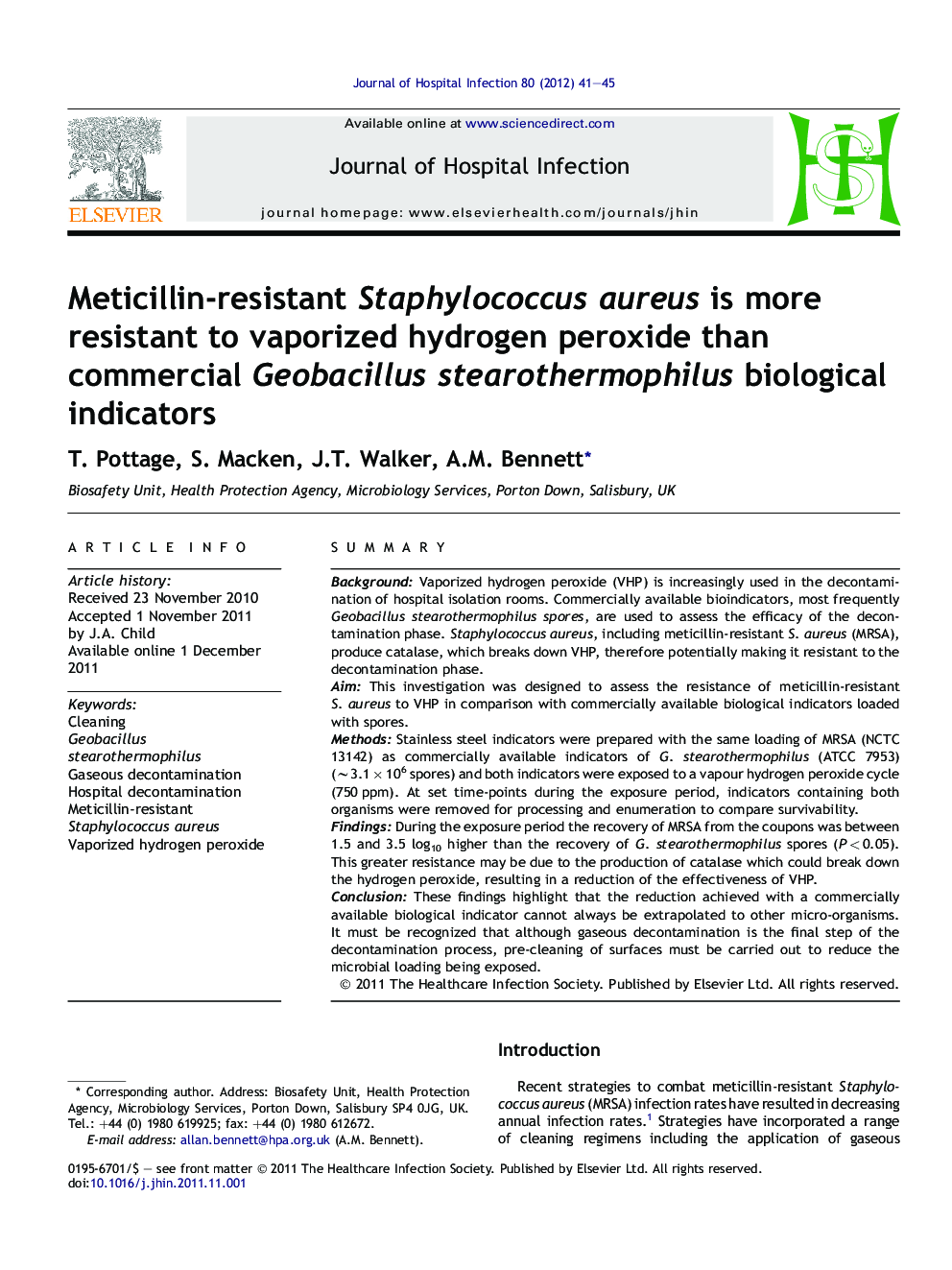| Article ID | Journal | Published Year | Pages | File Type |
|---|---|---|---|---|
| 3372026 | Journal of Hospital Infection | 2012 | 5 Pages |
SummaryBackgroundVaporized hydrogen peroxide (VHP) is increasingly used in the decontamination of hospital isolation rooms. Commercially available bioindicators, most frequently Geobacillus stearothermophilus spores, are used to assess the efficacy of the decontamination phase. Staphylococcus aureus, including meticillin-resistant S. aureus (MRSA), produce catalase, which breaks down VHP, therefore potentially making it resistant to the decontamination phase.AimThis investigation was designed to assess the resistance of meticillin-resistant S. aureus to VHP in comparison with commercially available biological indicators loaded with spores.MethodsStainless steel indicators were prepared with the same loading of MRSA (NCTC 13142) as commercially available indicators of G. stearothermophilus (ATCC 7953) (∼3.1 × 106 spores) and both indicators were exposed to a vapour hydrogen peroxide cycle (750 ppm). At set time-points during the exposure period, indicators containing both organisms were removed for processing and enumeration to compare survivability.FindingsDuring the exposure period the recovery of MRSA from the coupons was between 1.5 and 3.5 log10 higher than the recovery of G. stearothermophilus spores (P < 0.05). This greater resistance may be due to the production of catalase which could break down the hydrogen peroxide, resulting in a reduction of the effectiveness of VHP.ConclusionThese findings highlight that the reduction achieved with a commercially available biological indicator cannot always be extrapolated to other micro-organisms. It must be recognized that although gaseous decontamination is the final step of the decontamination process, pre-cleaning of surfaces must be carried out to reduce the microbial loading being exposed.
